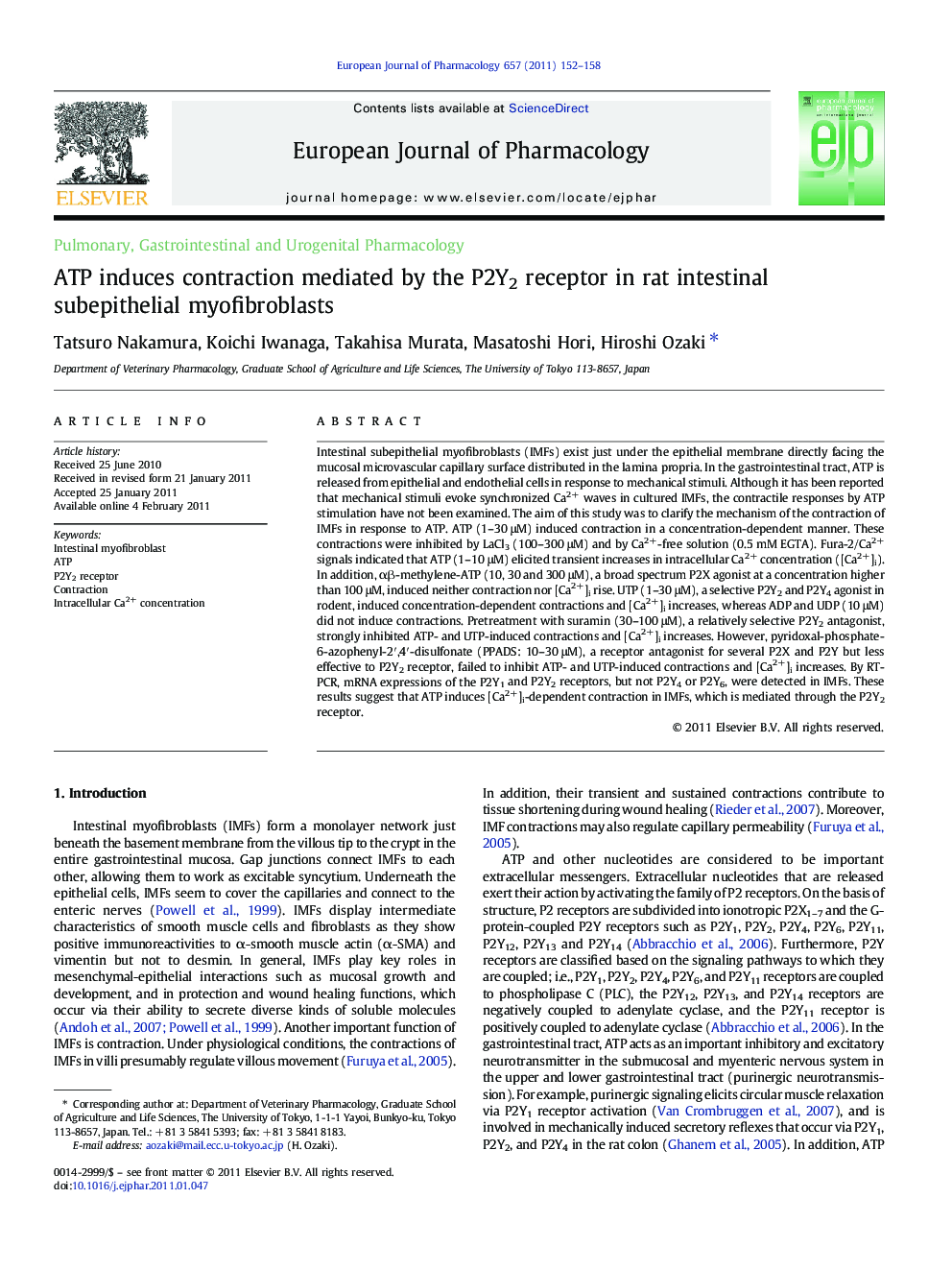| Article ID | Journal | Published Year | Pages | File Type |
|---|---|---|---|---|
| 2532895 | European Journal of Pharmacology | 2011 | 7 Pages |
Intestinal subepithelial myofibroblasts (IMFs) exist just under the epithelial membrane directly facing the mucosal microvascular capillary surface distributed in the lamina propria. In the gastrointestinal tract, ATP is released from epithelial and endothelial cells in response to mechanical stimuli. Although it has been reported that mechanical stimuli evoke synchronized Ca2+ waves in cultured IMFs, the contractile responses by ATP stimulation have not been examined. The aim of this study was to clarify the mechanism of the contraction of IMFs in response to ATP. ATP (1–30 μM) induced contraction in a concentration-dependent manner. These contractions were inhibited by LaCl3 (100–300 μM) and by Ca2+-free solution (0.5 mM EGTA). Fura-2/Ca2+ signals indicated that ATP (1–10 μM) elicited transient increases in intracellular Ca2+ concentration ([Ca2+]i). In addition, αβ-methylene-ATP (10, 30 and 300 μM), a broad spectrum P2X agonist at a concentration higher than 100 μM, induced neither contraction nor [Ca2+]i rise. UTP (1–30 μM), a selective P2Y2 and P2Y4 agonist in rodent, induced concentration-dependent contractions and [Ca2+]i increases, whereas ADP and UDP (10 μM) did not induce contractions. Pretreatment with suramin (30–100 μM), a relatively selective P2Y2 antagonist, strongly inhibited ATP- and UTP-induced contractions and [Ca2+]i increases. However, pyridoxal-phosphate-6-azophenyl-2′,4′-disulfonate (PPADS: 10–30 μM), a receptor antagonist for several P2X and P2Y but less effective to P2Y2 receptor, failed to inhibit ATP- and UTP-induced contractions and [Ca2+]i increases. By RT-PCR, mRNA expressions of the P2Y1 and P2Y2 receptors, but not P2Y4 or P2Y6, were detected in IMFs. These results suggest that ATP induces [Ca2+]i-dependent contraction in IMFs, which is mediated through the P2Y2 receptor.
